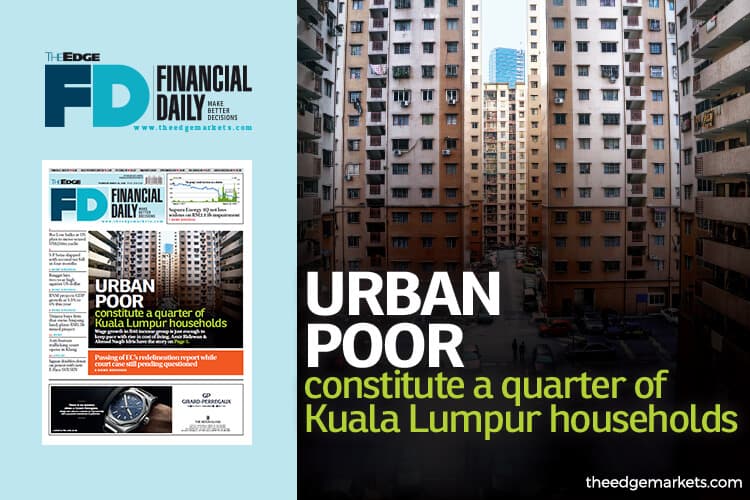
This article first appeared in The Edge Financial Daily on March 29, 2018
KUALA LUMPUR: The rising cost of living is hurting the urban folks the most. Up to 27% of the households living in Kuala Lumpur are earning below the living wage — the level of income needed for a household to afford a minimum acceptable standard of living, according to Bank Negara Malaysia (BNM).
In study titled “The Living Wage: Beyond Making Ends Meet”, BNM pointed out that the wage growth in the bottom 40% of households by income (B40) is just enough to keep pace with the rise in cost of living.
The B40 households got a notable increase in average monthly income of 6% per year between 2014 and 2016. Yet, the 6% growth did not amount to much because of the low base, said BNM.
After accounting for the increase in cost of living, according to the study, households in the B40 experienced only 3.8% growth in real income.
For some households, especially the ones with additional dependants, the small increase in income may be sufficient to keep up with the inflation but falls short of achieving a minimum acceptable standard of living, said the central bank in the annual report.
In the study, BNM estimates that the living wage for a single adult is RM2,700, couple without child RM4,500 and couple with two children RM6,500 in the capital city (see table).
Against this backdrop, BNM governor Tan Sri Muhammad Ibrahim advocates that employers should take into account of living wage when rewarding employees.
“This is something that we should do — pay people so they can live comfortably. But it doesn’t mean that everyone should be paid according to these numbers. It’s a number that equates the living standards in Kuala Lumpur,” the governor told the press briefing yesterday in conjunction with the release of the annual report 2017.
“The minimum wage is still relevant. But what we are trying to advocate here is that when we pay people, we pay people decently. And for Kuala Lumpur, this is the decent rate. It’s more of a guideline for employers,” he explained.
Wage should only rise with productivity
A living wage could only be effective if it is set at a realistic and sustainable level. The study pointed out that a higher wage should be commensurate with higher productivity.
The report cautioned that persistently weak productivity growth risks lower wage growth, which could ultimately hamper the ability of households to afford at least a minimum acceptable living standard.
“It is imperative to carefully derive living wage estimates that balance between ensuring employees can afford a minimum living standard, and the capability of employers to pay wages that are commensurate with employees’ productivity.
“The benefits of the living wage may be offset if the wage pressure eventually translates into an even faster increase in inflation and cost of living,” the BNM annual report said.
The report highlighted that Malaysia faces the challenge of modest productivity growth relative to its peers. BNM cited data from the International Labour Organization between 2011 and 2017, Malaysia’s growth of gross domestic product per person employed — a measure of labour productivity — is only 1.7%, less than half of the average labour productivity growth of 3.8% in the upper-middle-income economies.